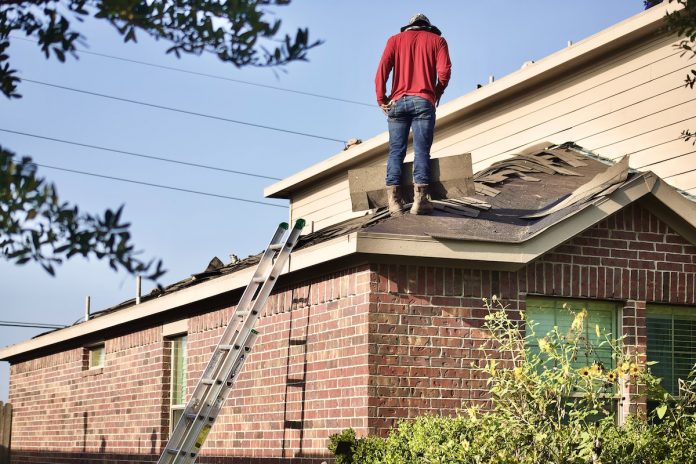The Top Reasons You Should Consider Fall Protection System for Your Home
Even those who are safest at work occasionally behave foolishly at home. When you’re at home, it feels like safety has an entirely different connotation cause nobody’s forcing you to pay attention to it. No safety supervisor is threatening to deduct a day-off salary or suspend you from work temporarily if you don’t follow instructions. You are also clever to figure out that OSHA has no authority over what you do in or at your own home. In the following article we will discuss about some of the top reasons you should consider fall protection system for your home.
If your institution’s program is based on compliance rather than safety, or you act safely on the job only to please your boss or the safety officer, you’re doing it wrong. Your well-being should be prioritized over all other considerations; if that is the case, whatever work you might be performing at home should reflect that culture.
Roof Fall Prevention on Residential Rooftops
For your information, fall protection infractions routinely receive the most citations from the Occupational Safety and Health Administration (OSHA) than any other type of infraction.
These mishaps and fatalities frequently happened during home building and roofing. There can be some misunderstanding as to which, if any, OSHA rules apply to homework. OSHA, however, makes it crystal clear that safety regulations apply to roofing and residential construction.
The requirement to use fall protection in housing construction is described as follows in Standard 1926.501(b)(13) of the Occupational Safety and Health Administration (OSHA):
Unless another provision in paragraph (b) of this section specifies an alternative fall protection measure, each worker actively involved in housing construction activities 6 feet (1.8 m) or more above lower levels must be safeguarded by safety net systems or individual fall arrest systems.
Exception: The employer must prepare and administer a fall protection plan that complies with paragraph (k) of 1926.502 when the employer can show that using these methods is impractical or poses a greater risk.
Fall Protection Restraints Come in Two Types: Passive and Active
-
Passive Fall Restraint
When a worker doesn’t deploy a personal fall arrest system, this is known as passive fall restraint, where the workers can leverage the personal fall arrest system. Guardrails or barriers close to an edge are passive fall protection. Decorating raised windows for outdoor holiday decoration from within the house would be an ideal way to relate this.
-
Active Fall Restraint
A full body harness and an entire personal fall arrest system are worn by the worker during active fall restraint. Using a roofer’s bucket kit would be an intelligent answer in the event of holiday decorations. The roofer’s bucket kit comes with a full body harness, a vertical lifeline system that can be used as a positioning tool, and a reusable roof anchor appropriate for most domestic applications.

Fall Protection Equipment for Residential Roofers
A conventional bucket kit is the best and most popular home roof fall safety system. You can get a bucket kit at your neighborhood big box or hardware shop.
A vertical lifeline arrangement, a full body strap, and a typical reusable roof anchor are all included in a standard bucket kit. Due to your height on a residential roof, you should often work in fall restraint when using a basic bucket kit on a roof.
Here are some best product options for a roof deck railing without penetrating roofs but also approved by OSHA.
Training in Residential Roof Fall Protection
Almost everyone who works in residential construction can think of at least a few instances when they “almost” fell or experienced something else because the staff lacks the knowledge to know precisely what equipment they should use and how to utilize it. However, in rare circumstances, some of these accidents lead to fatalities.
Anyone who works in residential roofing should receive training in personal fall protection. OSHA regulations apply to residential roofing, and unprotected workers are liable to the exact citations and fines as those who work in commercial construction.
The tutorial inside most bucket kits should be read and implemented. Small staff numbers are standard in residential construction firms, which frequently makes it challenging to get the necessary training. Nevertheless, it is worthwhile for you to invest in effective employee training.
Your Very Last Option Should Be Fall Arrest
Employing a body harness and lifeline is one of the most popular methods for providing personal fall protection. However, fall protection should only be used as a last resort when using a harness and lifeline. Why? Because fall-arrest systems make it more likely to survive a fall, they do not guarantee that you will be unharmed. Suspension damage can still cause death in as little as 15 minutes.
Therefore, it makes sense to consider a few preventive safety precautions before choosing the alternative of moving right to fall arrest. Additionally, if you select one of the first two possibilities, you won’t need to wear a harness.
1. Avoid the Risk
We would like to start by asking whether we can prevent the fall risk in the first place, which we have done in several ways. The Simpson Strong-Tie Quik Stik, which is effectively an expansion for a drill/driver, is one item we prefer using. We can put structural screws 10 to 11 feet above the ground with both feet firmly planted. We balloon-frame walls as large as we have space for, hang windows, frame and trim the overhangs and soffits, and even apply siding before elevating the wall to save the time we spend working off ladders.
Following the framing and sheathing of the roof, we additionally frame the inner, non-load-bearing walls. This enables us to move around to put rafters and place bird blocks along the roofline while setting up movable baker scaffolding with guardrails. Additionally, as far as I’m aware, some truss crews will roll and block trusses without being required to walk the wall plates by setting up planks about 36 inches off the ground along external walls.
2. Use Tangible Barriers
When the requirement for elevated work cannot be eliminated entirely, the next best option is to prevent falls by installing guardrails around stairway entrances and the outer edge of our deck frames. Installing the guardrails on the second-story outside walls before lifting enables us to sheathe the floor and frame the subsequent set of walls without donning the harness. On every job, we order a few additional 2x4s and construct our guardrails, which we shift as the work goes before disassembling and chopping into pieces to be used as blocking.
I initially opposed Guardrails, but I’ve come to see they offer many benefits. The rails can serve as a secondhand, so I don’t need a partner when I’m running a rim, for instance. Additionally, I can hook my nailer or saw from the rails and feel much more secure walking along walls.
3. Set up a Harness and an Anchor
When using guardrails or working from the surface is impractical, it’s time to install an anchor and don a harness. Then you must choose whether the set-up is utilized for fall arrest or restraint.
While arrest aims to grab the worker before they touch the ground, restraint prevents a worker from stepping off the edge of a property. Restraint is always preferred to arrest for understandable reasons.
Fall Protection Around Swimming Pool
If you have a pool, your outdoor space is the perfect place for parties, romantic meals, and family get-togethers. A pool not only enhances the appearance of your patio overall but also expands the range of entertainment options for you, your family, and visitors. However, it is crucial to make sure that your poolside is secure for both people and animals, something that pool fencing may help you do.
A pool fence is a great way to protect your children, this is one of the top reasons you should consider fall protection system for your home. By adding a safety fence around the pool, you can stop kids from accidentally falling in and drowning. In addition, many individuals consider the peace of mind that pool fencing offers to be worth the cost of installation. A pool fence has numerous advantages; thus, it is worthwhile. So, before any danger arises, hire a skilled pool fence contractor to assist you in installing a pool fence as soon as possible.
Lack of Adequate Insurance
You might have been obliged to purchase homeowners insurance coverage by your lender. If not, you should make sure you have insurance in case one of your viewers has an accident and attempts to sue you for damages. Additionally, you should check the property to see if there are any evident dangers and take mitigation measures for them (preventing possible buyers’ children from playing in your pool and keeping your dog away from the property during showings, for instance).
Final Words
These are some crucial fall prevention considerations that ought to be made if employees are working at heights. High-quality work output lowers expenses and boosts profitability. A reputable organization succeeds when a project is completed on schedule without risks or mishaps. Never forget to take adequate precautions at home or on the job.
Thank you for reading The Top Reasons You Should Consider Fall Protection System for Your Home






